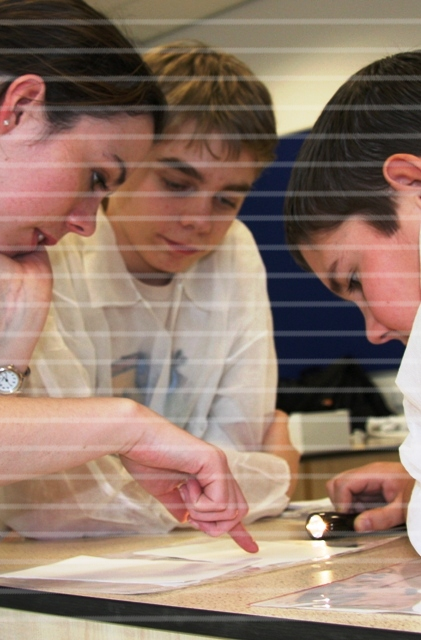THINK "FORENSIC"
We want you to be able to "think forensic." What this means is that when you gather evidence, you should take your time thinking carefully about what the evidence might mean. Don't jump to quick conclusions. And when you think you have the right answer, ask yourself "could I be wrong?" This approach will mean that you will avoid helping put the wrong person behind bars!

AN INTRODUCTION TO CRIME SCENE EXAMINATION
AIM
Throughout these pages you will see several underlined words. When you hover over them, further information will be revealed. Take careful note of the information because it will help you to understand more about the subject and answer questions, and it will also help you to meet the learning outcomes (these are listed at the top of many of the pages that follow).
A FEW WORDS ABOUT PLAGIARISM
Plagiarism is the use of another person's written work, their intellectual property, without their acknowledgement or permission. It is a form of theft. If you do use the material you find on these pages for any assignments or coursework, or anywhere else for that matter, make sure you not only acknowledge the source, but also that you re-write what you read in your own words. If you do use text "verbatim" - that is, as you find it, it is normal practise to enclose the text in inverted commas and say where you got it from. All text on this website is copyright (see our Copyright Statement for full details). Feel free to contact us to request permission to use any other material you find on our web site.
THE 3 STAGES OF THE CRIME SCENE TO COURT PROCESS
When a crime is reported to the police, a sequence of events begins to unfold. For those involved in the investigation, that sequence can be broadly divided in to three separate, but inter-linked parts. The first part involves examination of the crime scene to recover physical evidence; The second part involves the forensic examination of the physical evidence by forensic scientists and other specialists; The third part involves preparation and presentation of reports used in the courts. And this is exactly how the information in the pages that follow is divided.
CHAPTER 1 covers the examination of a crime scene - by crime scene examiners
CHAPTER 2 covers the forensic examination of the evidence - by forensic experts (off line)
CHAPTER 3 covers the legal aspects of preparing for, and giving evidence in court (off line)